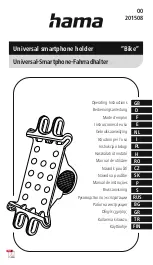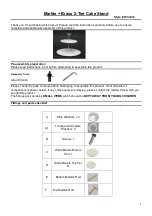
29
28
6. Select the flash.
In the case of the twin flash, each
press of the A-B / lamp button causes
the selected flash units to go from
both A and B, then only A, and finally
only B.
The ring flash has four separate
flashtubes. These can be turned
on or off independently by using
the lighting-selector switches on
the back of the unit. When the
switch shows red, that flashtube is
on. When black, that flashtube is
off.
As viewed from the rear
(control panel side), the A
flash is the one connected to
the left side socket, the B
flash to the right side.
7. When the flash is charged,
press the shutter-release but-
ton to take the photo.
• The flash is charged when
is lit on
the rear of the unit, and
also
appears in the camera viewfinder.
When the correct exposure was
obtained for the photo just taken:
• The flash-ready lamp
blinks on the
control panel for two seconds.
•
blinks in the camera viewfinder.
• The photo will be under-exposed if taken before charging is complete.
• The use of a tripod or remote cord is recommended to reduce camera
shake.
• Camera-to-subject distance of less than 0.5m, and a magnification
ratio of more than 0.15X (greater than 1:7), are recommended to get
the best results from the macro flash units.
• When neither a twin flash or ring flash is attached, turn the controller
off. Otherwise proper exposure will not be obtained.
• The camera’s AF illuminator is blocked by the adapter ring or flash
and cannot be used for focusing.
BASIC FLASH MODES
• If you turn off the ring flash while it is connected to the controller,
press the flash on/off button on the controller. Proper exposure will not
be obtained if only the four lighting-selector switches on the ring flash
are turned off.
A
B
Right flashtube
All flashtubes
















































